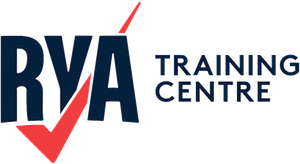Rule 23: Power-driven vessels underway
- A power-driven vessel underway shall exhibit:
- a masthead light forward;
- a second masthead light abaft of and higher than the forward one; except that a vessel of less than 50 metres in length shall not be obliged to exhibit such light but may do so;
- sidelights;
- a sternlight.
- An air-cushion vessel when operating in the non-displacement mode shall, in addition to thelights prescribed in paragraph (a) of this Rule, exhibit an all-round flashing yellow light.
- A WIG craft only when taking off, landing and in flight near the surface shall, in addition to the lights prescribed in paragraph (a) of this Rule, exhibit a high intensity all-round flashing red light.
- A power-driven vessel of less than 12 metres in length may in lieu of the lights prescribed in paragraph (a) of this Rule exhibit an all-round white light and sidelights;
- a power-driven vessel of less than 7 metres in length whose maximum speed does not exceed 7 knots may in lieu of the lights prescribed in paragraph (a) of this Rule exhibit an all-round white light and shall, if practicable, also exhibit sidelights;
- the masthead light or all-round white light on a power-driven vessel of less than 12 metres in length may be displaced from the fore and aft centre line of the vessel if centreline fitting is not practicable, provided that the sidelights are combined in one lantern which shall be carried on the fore and aft centre line of the vessel or located as nearly as practicable in the same fore and aft line as the masthead light or the all-round white light.
What this means:
Rule 23: Power-driven vessels underway – Our plain English guide to help you understand & remember this rule.
Any vessel is considered underway regardless of type when not anchored, made fast to the shore, or aground. Therefore, it must display lights to enable an onlooker to determine what aspect they can see. These are its side and stern lights, with some tweaks and minor exemptions depending on vessel size.
Lights to be displayed by all vessels underway
In addition to side and stern lights, power-driven vessels underway (including sailing vessels using their engines) must display masthead lights appropriate for their size.
The rules start with a requirement to display sidelights, a stern light and two forward-facing masthead lights. As vessel size decreases, there are simplifications to the rules more practical. However, if desired, there is nothing to stop any vessel from showing the complete set of power-driven vessel lights. This is why we talk about ‘probably less than 50m’ when referring to a vessel displaying the complete set of lights prescribed by the rules. Nothing stops a 4m RIB owner from displaying two separate sidelights, two forward-facing masthead lights and a stern light if they choose.


